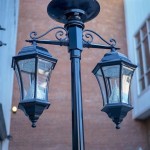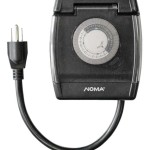What To Use to Make Outdoor Cushions
Creating comfortable and durable outdoor cushions requires careful selection of materials. The right fabric, filling, and sewing notions can mean the difference between cushions that last for seasons and those that quickly succumb to the elements.
Fabric Choices for Outdoor Cushions
Outdoor cushion fabric must withstand sun, rain, and fluctuating temperatures. Several options offer varying degrees of durability and aesthetics:
- Solution-Dyed Acrylic: This fabric is highly resistant to fading, mildew, and water. Its color is integrated into the fibers during manufacturing, ensuring long-lasting vibrancy.
- Polyester: Polyester fabrics are generally water-resistant and offer good colorfastness. They are a more budget-friendly option than solution-dyed acrylic.
- Olefin: Olefin is another durable, water-resistant, and fade-resistant choice. It is also resistant to abrasion and stains, making it suitable for high-traffic areas.
- Marine Vinyl: This heavy-duty vinyl is exceptionally waterproof and easy to clean. It’s an excellent option for boat cushions or areas frequently exposed to moisture.
- Sunbrella®: While technically a brand name, Sunbrella® is synonymous with high-performance outdoor fabrics. Their solution-dyed acrylic fabrics are known for superior durability and color retention.
Filling Options for Outdoor Cushions
Choosing the right filling is crucial for comfort and longevity. Different fillings offer varying levels of support and weather resistance:
- Polyester Fiberfill: A common and affordable option, polyester fiberfill provides decent comfort and dries quickly. However, it may flatten over time.
- Reticulated Foam: This open-cell foam allows water to drain quickly, preventing mildew. It offers good support and retains its shape well.
- Dry Fast Foam: Specifically designed for outdoor use, dry fast foam is highly water-resistant and dries quickly. It provides a firmer feel than polyester fiberfill.
- Foam Wrapped in Dacron: Wrapping foam in a layer of Dacron adds a plusher feel and helps protect the foam from moisture. This combination offers both comfort and durability.
Essential Sewing Notions
The right sewing notions contribute to the overall quality and durability of the finished cushions:
- UV-Resistant Thread: Using UV-resistant thread prevents the seams from weakening and unraveling due to sun exposure.
- Heavy-Duty Sewing Machine Needle: A heavy-duty needle is necessary to penetrate thick outdoor fabrics without breaking.
- Zippers: Adding zippers to cushion covers allows for easy removal and cleaning. Opt for waterproof or rust-resistant zippers for outdoor use.
- Welting Cord (Optional): Welting adds a decorative touch and helps define the edges of the cushion. Choose a weather-resistant welting cord for outdoor applications.
Measuring and Cutting Fabric
Accurate measurements and precise cutting are essential for creating well-fitting cushions:
- Measure Existing Cushions: If replacing existing cushions, measure the old cushions carefully to determine the required fabric dimensions.
- Measure Furniture: For new cushions, measure the furniture where the cushions will be placed. Add seam allowances to the measurements.
- Create a Pattern: Making a paper pattern can help ensure accurate cutting and minimize fabric waste.
- Cut Fabric Carefully: Use sharp fabric shears and follow the pattern precisely to ensure clean, straight cuts.
Construction Techniques
Proper construction techniques ensure durable and aesthetically pleasing cushions:
- Pin Fabric Layers: Pinning the fabric layers together before sewing helps prevent shifting and ensures accurate seams.
- Sew Straight Seams: Use a sewing machine to create straight, even seams. Reinforce stress points, such as corners, with extra stitching.
- Insert Zipper (if applicable): Install the zipper carefully, ensuring it aligns smoothly with the fabric edges.
- Turn Right Side Out: After sewing the seams, carefully turn the cushion cover right side out through the zipper opening.
- Insert Cushion Filling: Insert the chosen filling into the cushion cover, distributing it evenly for optimal comfort and support.
Caring for Outdoor Cushions
Proper care and maintenance can extend the lifespan of outdoor cushions:
- Regular Cleaning: Brush off dirt and debris regularly. Clean spills and stains promptly using a mild detergent and water solution.
- Storage: Store cushions in a dry, protected area during the off-season or during periods of inclement weather to prevent damage.
- Protective Covers (Optional): Using protective covers can further shield cushions from the elements and prolong their life.
Choosing the Right Materials for Your Climate
Consider the climate when selecting materials for outdoor cushions:
- Humid Climates: Opt for highly water-resistant and mildew-resistant fabrics and fillings, such as solution-dyed acrylic and reticulated foam.
- Sunny Climates: Choose fabrics with excellent UV resistance, such as solution-dyed acrylic or Sunbrella®, to prevent fading.
- Coastal Areas: Select materials that can withstand salt spray and harsh weather conditions, such as marine vinyl or solution-dyed acrylic.

Diy Outdoor Cushions A Erfly House

Diy Outdoor Cushions A Erfly House

How To Re Cover Outdoor Cushions A Quick Easy Diy Oh Yay Studio Color Painting Making Everyday Celebrating

Sew Easy Outdoor Cushion Covers Confessions Of A Serial Do It Yourselfer

Diy Outdoor Cushions A Erfly House

Sew Easy Outdoor Cushion Covers Confessions Of A Serial Do It Yourselfer

How To Make Cushion Covers For Outdoor Furniture The Ruffled Purse

Easy Diy Outdoor Cushion Covers Patio Furniture Cushions

Easy Way To Make Outdoor Cushion Covers

Make Your Own Outdoor Cushions Furniture Diy Pallet







